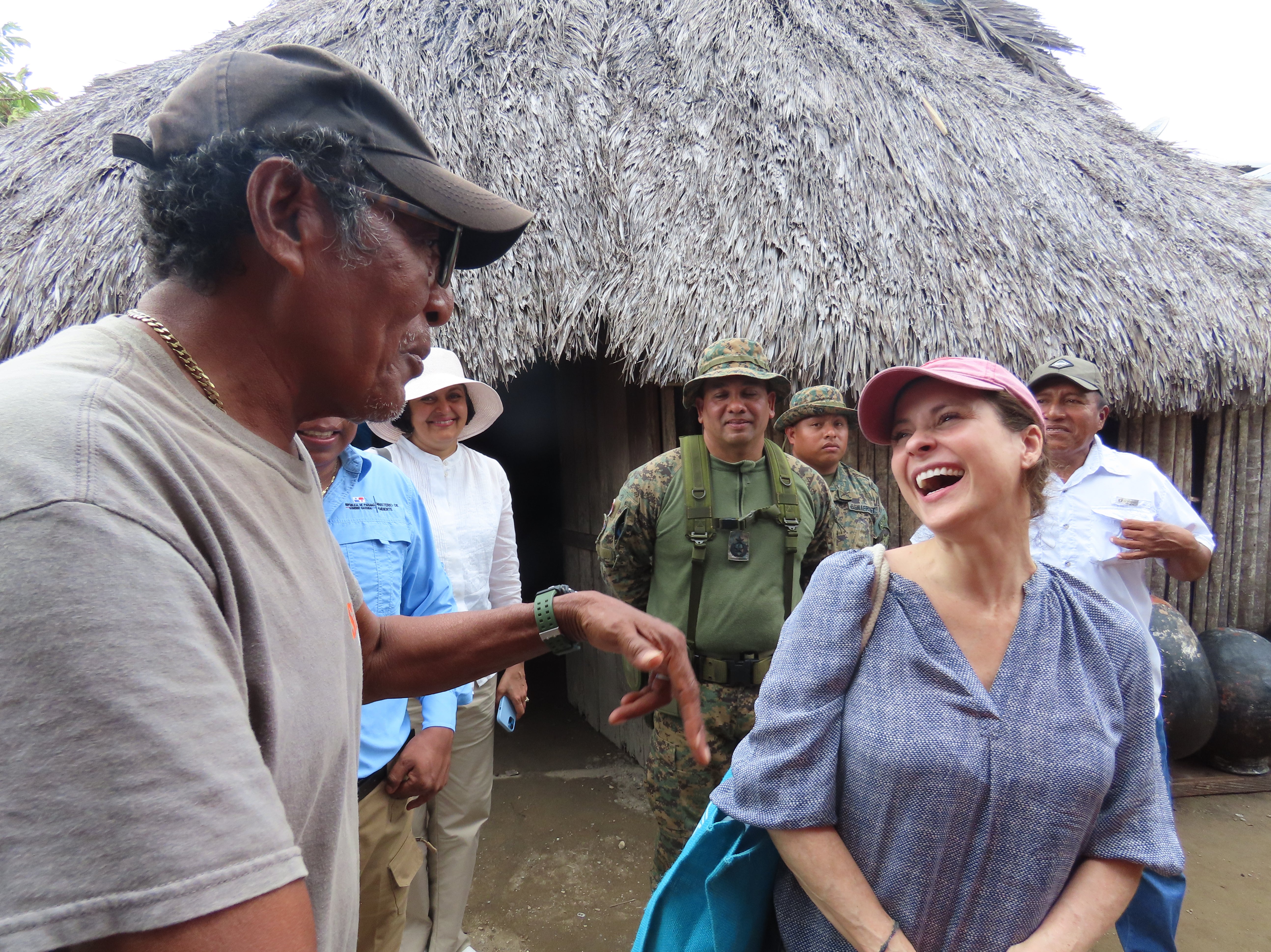Panama provides a stark warning about climate-induced displacement
I had read the statistics about sea level changes before coming to Panama, but I could not have anticipated their sheer impact in physical terms, writes Stanley Johnson


The bright-red Bell helicopter took off from the city airport at around 8.30am. From the air, we could see a dozen or so vessels lined up at the entrance to the Panama Canal.
For the first 20 minutes, we followed the route of the canal from Panama City; then we turned north, over the vast Parque Nacional Chagres, towards Panama’s Caribbean coast. The rainforest stretched out below us in all directions as far as the eye could see.
My companion of the day, Natalia Royo, had to raise her voice above the noise of the helicopter.
“Panama is one of only three countries in the world,” she shouted, “which are carbon negative. It absorbs more carbon than it emits.”
Natalia Royo knows what she is talking about. When not flying around in helicopters over the jungle, she is the Panamanian ambassador to the United Kingdom.
Looking out at the expanse of greenery below us, it was hard not to believe her.
How ironic it was, I thought, that a country which is setting an example to the rest of the world by maintaining its carbon-negative status should have produced the first instance in the whole of Latin America of “climate-change induced displacement of human populations”.

We flew along the coast for 20 minutes, then landed in a field by a beach where a boat was waiting for us to take us on a short journey across the sea to Gardi Sugdub.
Gardi Sugdub is one of the major Guna centres on this stretch of the coast. Since the Guna people are one of Panama’s main indigenous groups, I had been hoping that we might paddle across in a dugout.
In the event, our craft had a powerful outboard motor and we dutifully put on our life jackets. When we saw – and felt – how choppy the waves were, I was glad the dugout option had not materialised.
Forty-thousand Guna people live on Panama’s 365 Caribbean islands or in the deeply forested mountain area inland which stetches down to Darien and the Colombian border.
Quite a substantial proportion of Gardi Subdug’s more than 1,307 Guna inhabitants seemed to be waiting for us that morning.
I had read the statistics before coming to Panama. The evidence indicated that the level of the Caribbean Sea had risen between 20 and 25cm since the 1950s. The rate of increase rises as the effects of global warming accelerate. Until the 1980s, the sea rose at the rate of 2.5mm per year; since 2012, it has risen at a rate of 6.4mm.
But what I had not anticipated was the sheer impact in physical terms of those statistics. Alexis Alvarado, the Guna Yala governor who was on hand to greet us as we climbed out of the boat, explained graphically how the sea flowed into the village on all sides until the whole place was underwater.
“And it is not just the water that is the problem. All the garbage of the Caribbean seems to end up here.”
The high point of our visit came at a public meeting, held in an open-sided building where, in the front row, four hammocks had been slung for the elders.

Crucially, the leaders seemed to have accepted that the time had come to give up the unequal struggle. José Deveis, the first sahila of the Gardi Sugdub community, heaved himself out of his hammock and explained that they had been working on a solution for 10 years.
I am not sure I caught all the nuances, since the sahila spoke in Guna which was then into translated into Spanish by an interpreter (and my Spanish is fairly rudimentary).
“For the first time in the history of Panama,” he said, “we will be moving the people of an island to the mainland. Because of the overcrowding, there is no space in the community. The children have nowhere to play. But we will not be losing our culture, or our identity.”
Natalia Royo picked up that point. “Indigenous people are only 5 per cent of the world’s population, yet they are responsible for protecting 80 per cent of the world’s biodiversity.”
Seen in the context of Gardi Sugdub, and the transfer of an entire population from an island to the mainland, Natalia Royo’s point is tremendously important. And it is not just a question of elementary justice, since these poor people must endure a situation that is not of their making. There are wider concerns too. Relocating the island populations to new land-based dwellings should not lead to increased pressure on those wonderful “carbon-negative” forests of Panama which I had seen that morning as we flew from the Pacific to the Atlantic.
On the contrary, by emphasising traditional means of conserving terrestrial ecosystems, such as the “Nainu” agroforestry system, the newly displaced inhabitants of Gardi Sugdub may have a new, more cheerful, story to tell; a story that may be worth telling – and hearing – even beyond the borders of Panama itself. They may find themselves once again welcoming journalists in bright-red helicopters to their new homes in the forest.
Stanley Johnson is currently in Panama, attending the Our Ocean Conference 2023 on behalf of the World Coastal Forum
Join our commenting forum
Join thought-provoking conversations, follow other Independent readers and see their replies
Comments